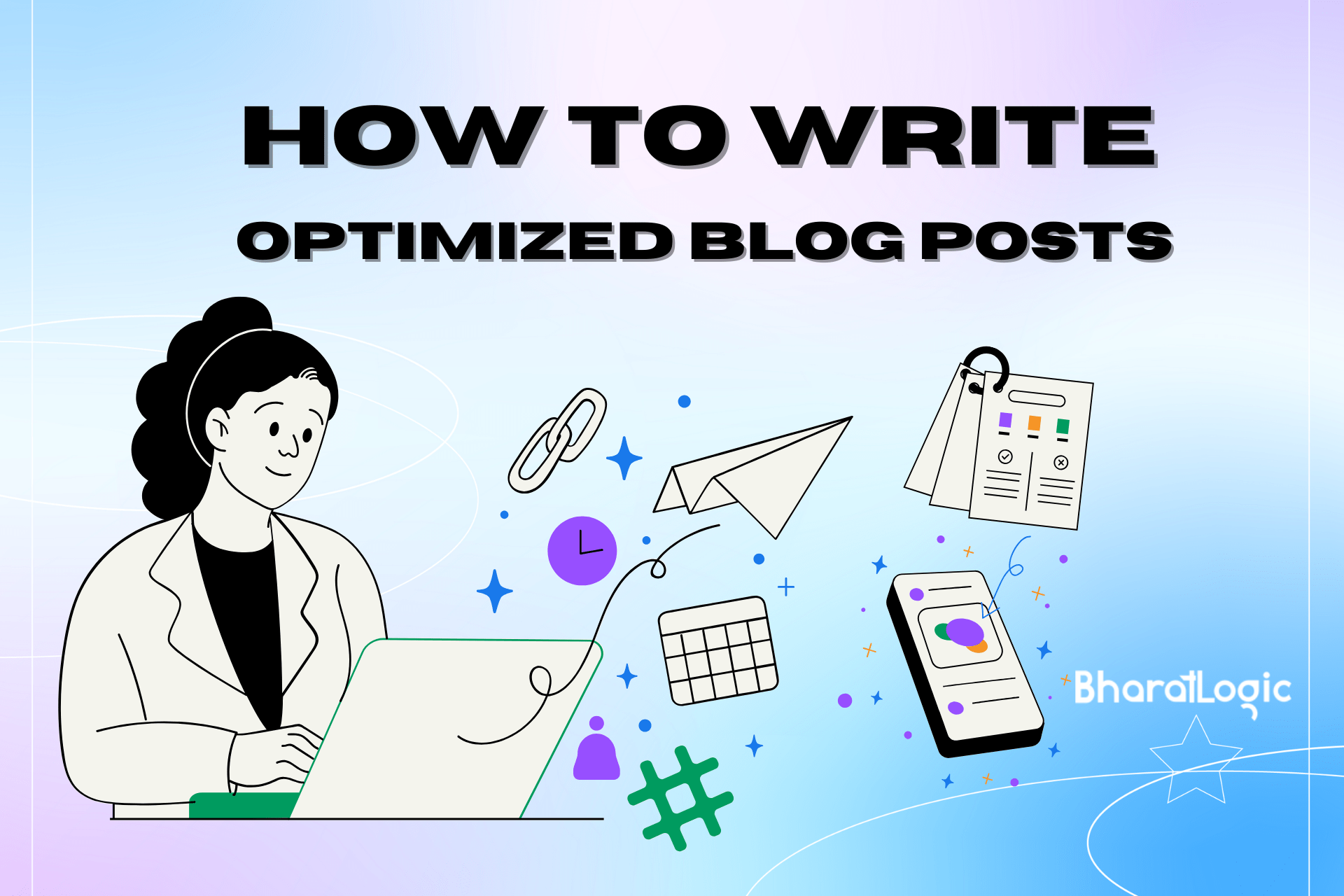How to Write Optimized Blog Posts That Rank on Google
Crafting a blog post is an art, and optimizing it for search engines is the science that propels your content to the forefront of digital visibility. Whether you’re a seasoned blogger or just stepping into the realm of online content creation, this guide is your roadmap to writing optimized blog posts that not only capture the attention of your audience but also secure a prime spot on the coveted first page of Google search results.
Choose a Blog Topic Idea

Choosing the right blog topic is pivotal for crafting content that resonates with your audience and excels on search engines. In 2022, bloggers invested an average of 4 hours and 10 minutes in crafting a single article.
Begin by understanding your target audience and identifying their interests. What questions are they asking? What challenges are they facing? Your blog should provide solutions or valuable insights.
Consider using tools like Google Trends, Keyword Planner, or even social media platforms to gauge trending topics and discussions within your niche. Aim for a balance between relevance to your audience and search potential.
Remember, a well-chosen topic sets the stage for the entire writing process. It’s the foundation upon which your SEO strategy will be built. Once you’ve narrowed down your topic, you’re ready to delve into the world of keywords.
Perform Keyword Research

Choosing the right keywords is like having a reliable compass for your blog. Start by using tools such as Google Keyword Planner or SEMrush to identify keywords relevant to your topic. Look for a balance between search volume and competition.
Choose long-tail keywords whenever feasible. While they may have lower search volume, they offer specificity, drawing in a more targeted audience. Notably, long-form content tends to garner 77.2% more links compared to shorter articles. These carefully selected keywords will serve as the guiding stars for your content creation, ensuring your blog is not only discoverable but also highly valuable to your audience.
Resist the Urge to Keyword Stuff

While keywords are the backbone of SEO, overusing them can lead to keyword stuffing, a practice frowned upon by both readers and search engines. Maintain a natural flow in your writing, integrating keywords where they naturally fit.
Think of keywords as seasoning in a dish – a sprinkle enhances the flavor, but too much can ruin the experience. Your primary focus should be on providing valuable content. Keywords should complement your message, not overshadow it.
Create an Outline: Blueprint for Success

Now that you have a topic and keywords, it’s time to craft a roadmap for your blog post. An outline serves as the blueprint, providing structure and ensuring your content flows logically.
Divide your content into sections, each addressing a specific aspect related to your chosen topic. This not only helps in organizing your thoughts but also makes the content more reader-friendly. Consider using headers and subheadings to break down the information into digestible chunks.
Your outline should guide the reader seamlessly from introduction to conclusion, offering a smooth journey through the valuable insights you’re about to share. With the blueprint in place, you’re ready to breathe life into your blog.
Write the Body Content
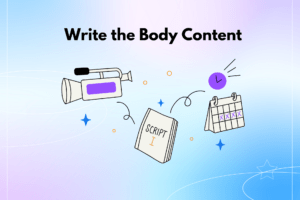
With your outline as a roadmap, it’s time to dive into the heart of your blog post – the body content. This is where you provide in-depth insights, answer questions, and offer solutions.
Ensure your writing is clear, concise, and engaging. Use your chosen keywords naturally, focusing on creating content that resonates with your audience. Break up long paragraphs, incorporate visuals when necessary, and maintain a conversational tone to keep readers hooked.
Add an Introduction and Conclusion
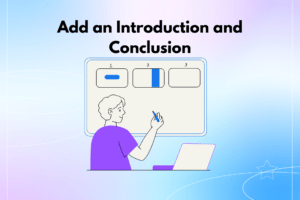
Your blog’s introduction is the gateway to capturing your reader’s attention. Craft a compelling opening that introduces the topic, sets the tone, and entices your audience to continue reading. Pose a question, share a relevant statistic, or tell a brief story to establish a connection.
As readers journey through the body content, ensure a smooth transition to your conclusion. Summarize key points, restate the significance of your insights, and invite readers to engage further. A powerful conclusion leaves a lasting impression and encourages your audience to take the desired next steps, whether it’s exploring more content or sharing your post.
Write Your Headline

Your headline is the first thing readers see, making it a crucial element of your blog post’s success. Craft a title that not only includes your target keyword but also captivates your audience. According to the data by Optinmonster “Making your headline 6-8 words can increase your CTR by 21%.”
Use Headings to Your Benefit

Headings are not just for structure; they’re your navigational aids in the vast sea of text. Break down your content into well-defined sections using clear and concise headings. Use hierarchical heading tags (H1, H2, H3, etc.) to create a logical flow. This not only helps readers but also signals to search engines the hierarchy and importance of your content.
Optimize Your Content for Featured Snippets
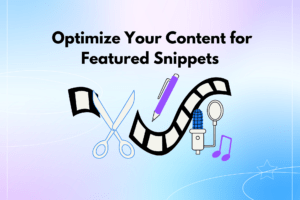
Featured snippets are the spotlight in the search engine results pages (SERPs), and optimizing your content for them can significantly increase visibility.
To secure a coveted spot, structure your content in a way that directly answers common queries related to your topic. Use clear and concise language, and consider using lists, tables, or bullet points. Google often pulls content directly from featured snippets to answer user queries, making this a powerful SEO strategy.
Write for Humans, Not Search Engines
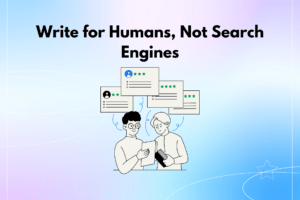
While SEO optimization is crucial, never forget the human element in your content. Write to connect, inform, and engage your audience rather than solely catering to search engines.
Understand your readers’ needs and preferences. Craft content that is not only informative but also enjoyable to read. Use a conversational tone, and break down complex ideas into easily digestible pieces.
Remember, your audience is seeking valuable insights, and a human-centric approach ensures they not only find what they’re looking for but also enjoy the journey.
Include Keywords in Your Meta Description

Your meta description is the preview snippet that appears beneath your title in search results. Craft a concise yet informative meta description that not only describes your content but also includes your target keywords.
Think of it as a movie trailer – it should entice readers to click and explore more. Google often bolds keywords in the meta description that match the user’s query, making it even more crucial for SEO.
A well-crafted meta description enhances your click-through rate and ensures that your audience finds value in your content.
Add Alt Text to Images

Add alt text to all images
Images add visual appeal to your blog, but search engines need a little help understanding them. Alt text, or alternative text, serves as a description for your images, making them accessible to both search engines and users.
Craft descriptive and concise alt text for each image, incorporating relevant keywords when appropriate. This not only aids in SEO but also ensures that your content remains accessible to those using screen readers or facing slow internet speeds.
Review Your First Draft

Congratulations on reaching this stage of your content creation journey! Now, it’s time to refine and polish your first draft. Review your content with a fresh perspective, keeping an eye out for clarity, coherence, and overall quality.
Check for grammatical errors, ensure a logical flow between sections, and verify that your chosen keywords are seamlessly integrated. This is the stage where you fine-tune your masterpiece, ensuring it aligns with both your SEO strategy, goals and the expectations of your readers.
Consider seeking feedback from peers or utilizing online tools such as Hemingway and Grammarly to enhance the quality of your content. Once you’re satisfied with the final touches, you’re ready for the grand finale – publishing your optimized blog post.
Publish Your Blog Post

The moment has arrived to unveil your optimized masterpiece to the world. Before you hit that publish button, perform a final check. Ensure that formatting is consistent, images are properly aligned, and all hyperlinks are working seamlessly.
Consider scheduling your post for optimal visibility. You might want to share a teaser on your social media platforms, creating anticipation among your audience. Encourage engagement by inviting readers to share their thoughts and feedback in the comments section.
Remember, the journey doesn’t end with publishing – monitor your post’s performance, respond to comments, and consider promoting it further. Your blog is now live, ready to captivate your audience and climb the ranks on search engine results pages.
Congratulations on completing this comprehensive guide to writing an optimized blog post that not only ranks on Google but also resonates with your readers. Happy blogging!
You are now equipped with the knowledge of key tips to write good blog post . As you begin your search, it won’t take long to discover that Bharatlogic aligns perfectly with all the criteria a client seeks in a company. With extensive experience in the industry, we stands out as a premier digital marketing services company that consistently delivers high-quality work within deadlines and without exceeding budget constraints. Take the next step and reach out to the company’s expert team today to bring your vision to life with cutting-edge technology and a dedicated team.

